Are you looking to buy a mini drone this year? If yes, then you have arrived at the right place.
In this article, we are going to talk about the 10 best mini drones that will give you a bang for your buck.
In recent years, mini drones have gained popularity – thanks to their versatility and ease of use. Mini drones are a perfect starting point for beginners looking to learn this craft without breaking the bank.
First, let’s clarify the term ‘mini-drone’.
What is a Mini Drone?
A mini drone is a type of unmanned aircraft system (UAS) that weighs less than 55 grams. These little flying machines are great for taking photos, recording videos, and many other purposes.
In fact, some of these mini-drones have become indispensable tools for aerial photography and videography. While some of them can also be useful for surveying, mapping, or even delivering packages.
Before we get into the top 10 mini drones, let us look into the criteria you must consider before buying these amazing machines.
Things to Consider Before Buying a Mini Drone
Whether you’re purchasing a mini drone for recreation or you want to incorporate it into your business, here are a few factors to consider before buying one:
- Price of The Drone
- Material Used
- Range of the Device
- Flying Time
- Camera & Gimble
Price of Mini Drones
Before buying a mini drone, make sure to research the cost and availability of replacement parts and accessories. Also, be careful about purchasing third-party parts and accessories. Equipment compatibility is a major issue to consider and they must last as long as the original equipment.
Also, check out the warranty information on any drones you’re considering.
Material Used
Cheaper drones are often made from plastic. While plastic can be inexpensive and light, it‘s not always durable. Also, avoid using aluminum drones, they are lightweight and do not hold up well to accidents.
If you’re trying to save money, at least consider ABS plastic, which is stronger than regular plastic. Or consider fiberglass and Carbon Fiber drones, they are much more resilient but much more expensive.
Range of a Mini Drone
As a general rule the farther your drone can fly from your transmitter the better. Cheap drones may have a limited range of only 30 meters, whereas more expensive ones can cover longer distances without losing contact with the controller.
If you’re interested in making drone footage and photography then the range becomes an important factor because extended range will allow drones to reach more places. And you will be able to take shots from a variety of angles.
Flying Time
A drone’s battery limits how long it takes to fly, 25 to 30 minutes of flying time is pretty typical. But some cheaper models last for only five minutes.
Regardless of how much flying time your drone has, buying some additional batteries and charging them before you leave home is always a good idea. So if your drone runs out of power, you can swap the battery and instantly double the time you’re able to fly!
Camera
If you are considering a drone with a camera it’s better to check out the camera specifications, paying attention to shutter speed, frame rate, aperture, and image stabilization.
All of these factors may affect the quality of your photographs.
3-Axis Gimbal
A gimbal helps keep your camera stable while you fly. Three axes (pitch, roll, and yaws) describe the different motions a drone can make.
A three-axis gimballed camera will let your drone stay steady while you shoot videos. This is especially important for aerial shots because the camera needs to remain leveled so everything appears straight.
Read: New Drone Laws by State in the USA
List of 10 Best Mini Drones
There are several types of mini drones, each with its unique set of features and applications. Some are designed for specific purposes, such as surveillance, while others are meant for recreational purposes.
Here are the 10 best mini drones in 2023
- DJI Mini 3 pro
- DJI Mini 2
- DJI Mavic 2 Pro
- iFlight Bumblebee HD V3 BNF
- Parrot Anafi Ai
- DJI Air 2S
- DJI Mavic 2 Enterprise Advanced
- Autel Evo II Pro
- Skydio 2+
- DJI Avata
DJI Mini 3 Pro
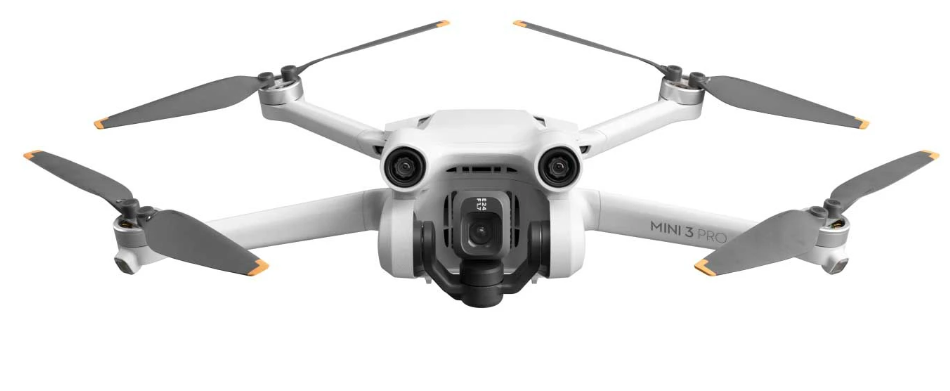 Source: DJI
Source: DJI
The mini-sized DJI Mini 3 Pro is as powerful and portable as it is regulation-friendly. It comes with a 1/1.3-inch sensor and top-tier capabilities and weighs under 250 grams. Its improved design and upgraded features such as obstacle sensing make it safer and easier to fly this mini drone.
Features and Specifications of DJI Mini 3 Pro
- Covers a distance of up to 12 km
- 1/1.3-inch CMOS sensor
- 4K HDR video and 48MP RAW photos
- Extended flight time of up to 34 minutes
- Tri-Directional Obstacle Sensing
Pros and Cons of DJI Mini 3 Pro
Pros
- 4K60 with digital zoom
- Popular sub 250g category
- Excellent image quality
- Three-way obstacle sensors
- Upward-tilting camera
- Two remote control options
Cons
- GPS lock-on takes some time
- Expensive
- Omits AirSense ADS-B system
Best Known For
- Vertical video shooting
- Social media powerhouse
DJI Mini 2
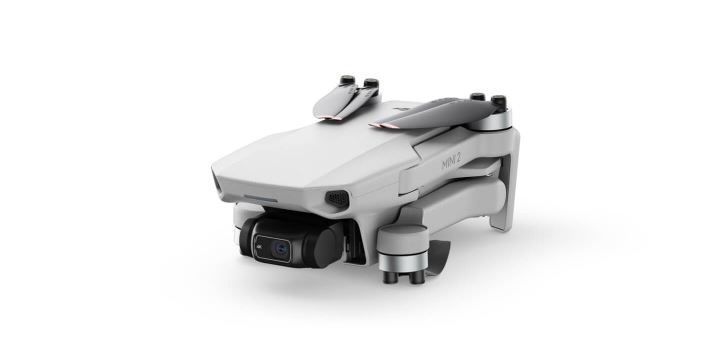 Source: DJI
Source: DJI
DJI Mini 2 transforms how you capture your favorite moments. This mini drone is compact and easy to carry and fits in the palm of your hand. Whether you’re shooting at a deserted beach or capturing the details of your next family gathering, Mini 2 can do it all.
Features and Specifications of DJI Mini 2
- 31-Min Max Flight Time
- 10km Video Transmission
- Level 5 Wind Resistance
- Can resist 29-38kph winds
- 3-Axis Gimbal with 4K Camera (12MP)
Pros and Cons of DJI Mini 2
Pros
- Small and lightweight
- Raw and JPG photo modes
- Long flight time
- Automated Quickshots
- GPS and other safety features
Cons
- Omits obstacle avoidance and HDR
- Not very stable in wind
- Doesn’t include ActiveTrack or Hyperlapse
- No color profiles for JPGs and video
Best Known For
Ultra Lightweight form factor paired with reliable transmission distance.
DJI Mavic 2 Pro
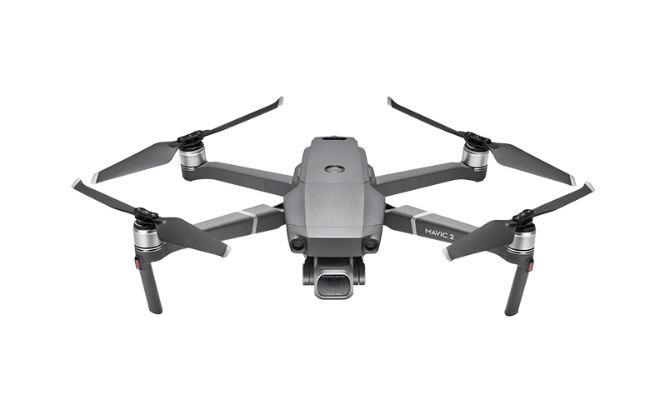 Source: Hasselblad
Source: Hasselblad
DJI Mavic 2 Pro is the dream of every aerial photographer, it is one of the best mini drones with a camera. It comes with an industry-leading Hasselblad camera, an adjustable aperture, and a 10-bit Dlog-M color profile. The DJI Mavic 2 Pro offers one of the best camera performances along with expert camera options, sharper details, and vibrant colors. The DJI Mavic 2 Pro features everything you need in one of the top camera drones on the market.
Features and Specifications of DJI Mavic 2 Pro
- 1” CMOS Sensor
- 31 minutes (at a consistent 25 kph) max flight time
- 18 km max distance
- 29–38 kph wind speed resistance
- Omnidirectional Obstacle Sensing
- Dlog-M (10bit), supports HDR video (HLG 10bit) color mode
Pros and Cons of DJI Mavic 2 Pro
Pros
- Great battery life
- 20MP Raw and JPG still imaging
- Obstacle avoidance sensors
- 4K video
Cons
- No DCI format support
- Over-priced
- Less internal memory
Best Known For
An older model offers the most features and bang for the buck, hack to get attitude mode for super smooth video. Shoot action sports and offers a lot of flexibility.
iFlight Bumblebee HD V3
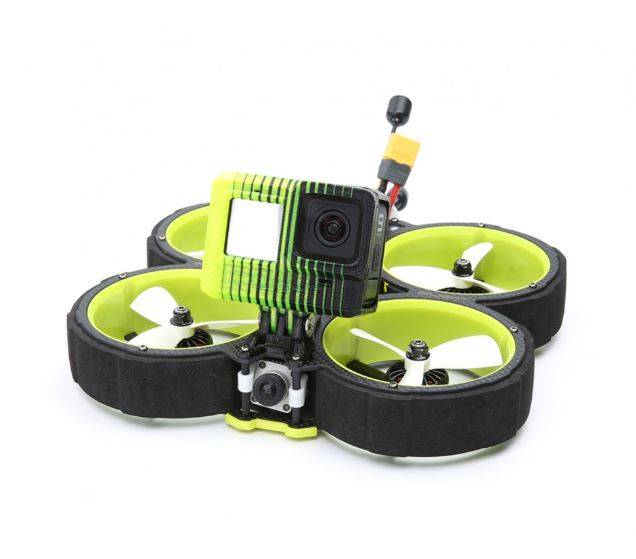 Source: iFlight
Source: iFlight
The iFlight BumbleBee HD V3 comes with the amazing CaddX Polar Digital HD System which allows you to fly through the sky like no other mini drone. It has a CineWhoop that doesn’t have high-pitched noise that annoys people. Mini drone iFlight BumbleBee HD V3 has lightweight Polycarbonate ducts for minimal disturbance to channel thrust and performance.
Features and Specifications of iFlight BumbleBee HD V3
- Bumper prop guards to protect the sensitive environment
- T700 Quality Carbon
- Upgraded EVA protectors
- Low Resonance frame construction
- 355.6g weight (without battery)
Pros and Cons of iFlight BumbleBee HD V3
Pros
- Great for beginners
- Not easy to break
- Upgraded EVA protectors
- No Props or frame in view
Cons
- Expensive
- Heavy
- Creates too much noise
Best Known For
Great starting Cinewhoop with battery flexibility and control flexibility. Ie. use DJI goggles or buy different command/control FC.
Parrot Anafi Ai
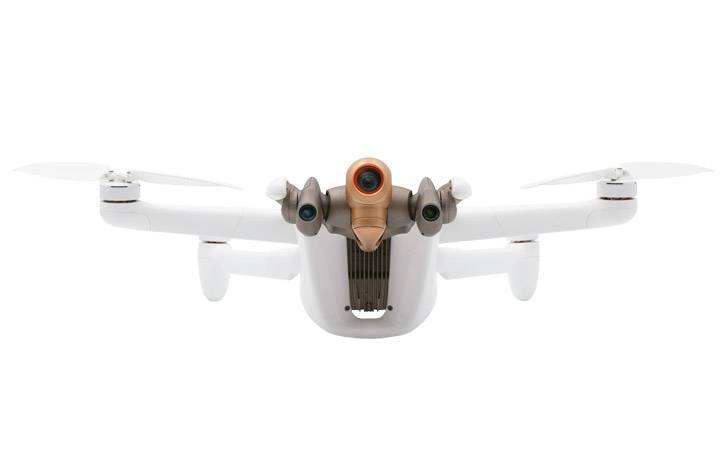 Source: Parrot
Source: Parrot
Parrot Anafi Ai incorporates a 4G radio module, in addition to the Wi-fi radio, allowing it to transmit a video stream in 1080p with a 300 ms latency anywhere in the world. Its sensor supports a high megapixels count for finely detailed aerial images. Mini drone Parrot Anafi Ai uses a Quad Bayer color filter array, where groups of 4 adjacent pixels come in one single color. In real-time HDR capture mode, the signal from the four adjacent pixels is added together, resulting in an image with a greater dynamic range.
Features and Specifications of Parrot Anafi Ai
- 1/2’’ 48 MP CMOS Sensor
- Seamless 4G/WiFi switching
- 4K HDR 30 fps video, 6x zoom
- 32 minutes maximum flight time
- 14 m/s – 31.3 mph maximum wind resistance:
- MicroSD and SIM card slots
- Autonomous Photogrammetry for large-scale mapping
Pros and Cons of Parrot Anafi Ai
Pros
- High wind resistance
- Unique lens and camera features
- Adequate battery life
- Small and lightweight
Cons
- Difficult to fly
- Limited video frame rates
- Autonomous features require an extra purchase
Best Known For
The great all-in-one drone that is Blue sUAS approved.
DJI Air 2S
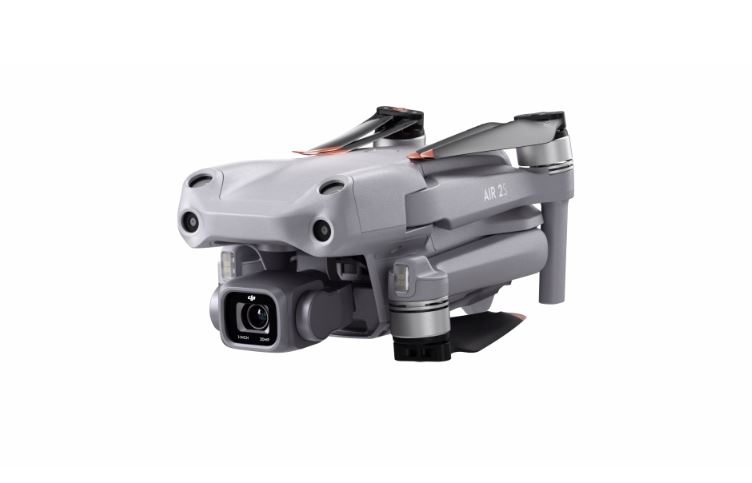 Source: DJI
Source: DJI
DJI Air 2S is the ultimate mini drone for creatives on the go. Take this all-encompassing aerial powerhouse along anywhere to explore and record your world in breathtaking detail. With a 1-inch CMOS sensor, powerful autonomous features, and a compact body measuring just under 600g.
DJI Air 2S allows you to shoot RAW images with an impressive dynamic range of up to 12.6 stops to capture more visual data in every scene, even in challenging lighting conditions. The advanced algorithms for Advanced Pilot Assistance Systems (APAS 4.0) have been further refined, enabling mini drone DJI Air 2S to actively avoid obstacles in increasingly complex situations and at higher speeds.
Features and Specifications of DJI Air 2S
- 1-inch CMOS sensor
- 5.4K/30fps and 4K/60fps Video (20 MP camera)
- Master shots, ADS-B Air sense
- 12km FHD Transmission
- Obstacle Sensing in 4 Directions
Pros and Cons of DJI Air 2S
Pros
- HDR, Log, and Standard video profiles
- Video at up to 5.4K quality
- AirSense transponder
- Robust safety features
- Automated camera shots
- Half-hour flight time
Cons
- Less internal storage
- Doesn’t offer in-camera filters
- HDR HLG workflow for pros only
- The remote doesn’t include an EV control wheel
- Raw images don’t transfer to smartphones and tablets automatically
- App-based editing limited to 1080p output
Best Known For
The best sensor for photos, but it has no adjustable aperture.
DJI Mavic 2 Enterprise Advanced
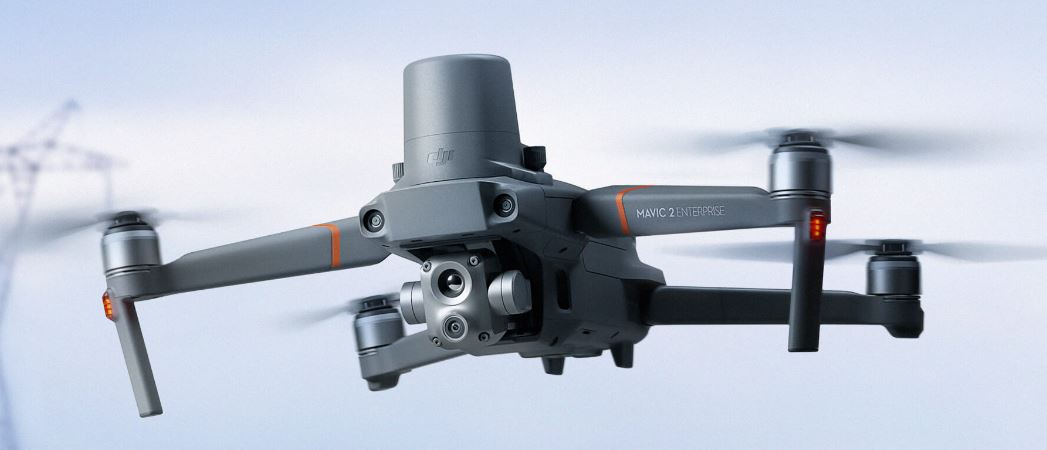 Source: DJI
Source: DJI
The DJI Mavic 2 Enterprise Advanced is a mini drone designed for professional aerial photography and videography missions. Its advanced features include a powerful camera system, precise positioning capabilities, and intelligent flight control systems. DJI Mavic 2 Enterprise Advanced allows you to capture accurate details with high-resolution thermal and visual cameras.
Features and Specifications of DJI Mavic 2 Enterprise Advanced
- 1/2” CMOS Sensor
- 640 × 512 px Thermal Camera
- 48MP Camera
- Working Temperature from -10° C to 40° C
- Omnidirectional Obstacle Sensing
- 10 km HD Transmission
- Centimeter-level Positioning with RTK
Pros and Cons of DJI Mavic 2 Enterprise Advanced
Pros
- Lightweight and portable
- Omnidirectional obstacle sensing
- Fully compatible and can integrate an RTK module
Cons
- Not good for surveying
- Not waterproof
- Video transmission distance of only 10km
Best Known For
It is a commercial Powerhouse in a small form factor.
Autel Evo II Pro
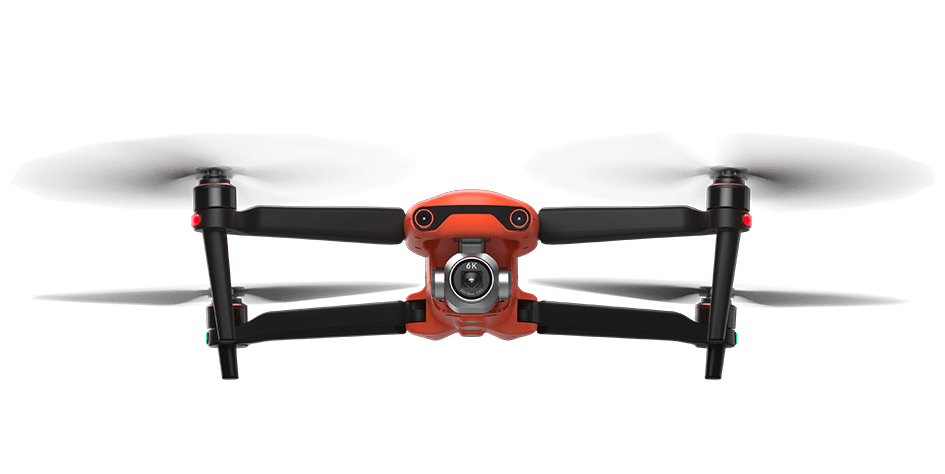 Source: Autel
Source: Autel
Autel Evo II Pro is also one of the popular mini drones with a camera. Its most notable feature is a modular camera system, offering three models that cover a range of features that meet different users’ needs, from consumers to professionals.
The standout feature of this mini drone is a modular camera system, which comes in three types and offers a variety of features to fulfill the needs of different users, from amateurs to experts.
Features and Specifications of Autel Evo II Pro
- 1-inch CMOS image sensor
- 20MP Camera, 6K/30FPS Video
- 15 km flight distance
- 5-Hour Battery Life
- 40 minutes Maximum Flight Time
- 27mph (12m/s) Maximum Wind Resistance
- 360° Obstacle Avoidance
- -10°C to 40°C Operating Temperature
Pros and Cons of Autel Evo II Pro
Pros
- Adjustable aperture
- 20MP stills in Raw DNG or JPG
- Subject tracking and cinematic flight modes
- Up to 5.4K video and Raw Photos
- Automated camera moves and Hyperlapse
Cons
- The color video profile isn’t configurable
- Doesn’t support autonomous navigation around obstructions
- 8-bit flat video profile
- Log Color only available in Auto
Best Known For
Large sensor but has no geofencing.
Skydio 2+
 Source: Skydio
Source: Skydio
Skydio 2+ is designed to be your own personal movie maker. It comes with unmatched autonomous tracking, obstacle detection, and high-quality 4K60 HDR video quality.
Skydio 2+ mini drone lets you launch, fly, land, edit, and export all with Skydio App. And with the new battery life, you can enjoy up to 27 minutes of flying time.
Features and Specifications of Skydio 2+
- 1/2.3” 12.3MP CMOS Sensor
- 4K60 HDR
- 27 minutes Maximum flight time
- 25 mph Wind Speed Resistance
- -5°C to 40°C Operational Temperature Range
- 360° Obstacle Avoidance
- GPS Subject Tracking
Pros and Cons of Skydio 2+
Pros
- Magnetic battery
- Great video quality
- Ideal autonomous flying
- Great built quality
Cons
- Sluggish controls
- Hard to get smooth pan shots
- Lens can have some fringing
Best Known For
Follow Me features for action sports.
DJI Avata
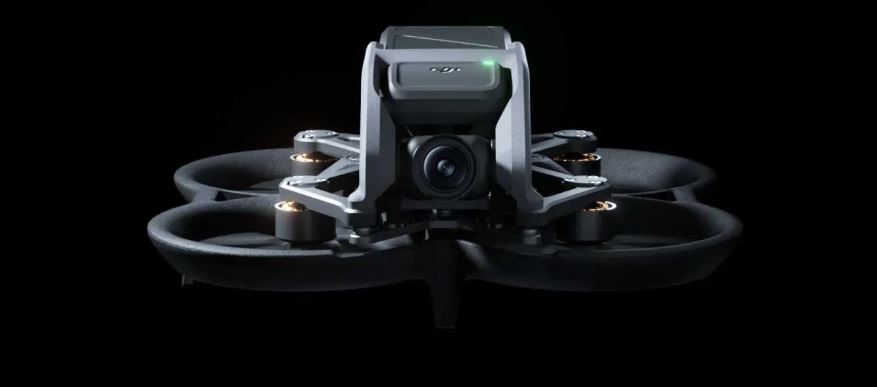 Source: DJI
Source: DJI
Compact and lightweight, DJI Avata is nimble in tight spaces. Every aspect of its design was made for you to be bold. The built-in propeller guard means that if Avata comes in contact with an object, it can bounce back, stay in the air, and can keep on flying.
The DJI Avata is agile in confined spaces and is small and light. Its entire design was intended to encourage you to take risks. Because of the integrated propeller guard, Avata mini drone can bounce back if it collides with something, remains airborne, and continue to fly.
Features and Specifications of DJI Avata
- HD Low-Latency Transmission
- Palm-Sized and Agile
- 1/1.7-inch Sensor
- 4K/60fps Video
- Flight time of up to 18 minutes
- D-Cinelike Color Mode
- 10 km Max Video Transmission Range
Pros and Cons of DJI Avata
Pros
- The one-handed controller works well
- Good battery life for an FPV drone
- Fantastic video quality
- Sharp FPV goggles with diopter adjustment
- Wide-angle lens and 4K60 video convey the sense of motion
Cons
- Slow to react to shifts in white balance
- Less versatile than a standard camera drone
- Manual flight requires an additional controller
- Expensive
Best Known For
Consumer Grade Entry Level Cinewhoop FPV
Conclusion
Mini drones are becoming popular due to their ability to provide stunning aerial images and video footage which otherwise wouldn’t be possible. With all the technological developments that have occurred, it’s no surprise that people are interested in buying one of these mini-flying machines.
Before you buy your mini drone, be sure to into account what we talked about earlier. Things such as size, weight, flight capabilities, battery life, camera quality, range, and much more.
Also, keep in mind how you intend to use the drone and what features are important for you.
And don’t forget to register with the FAA if your drone weighs more than 55 pounds.
Do you have insights on these mini drones that you want to talk about? We’d love to hear your thoughts. Please post your comment below.






Add Your Comment